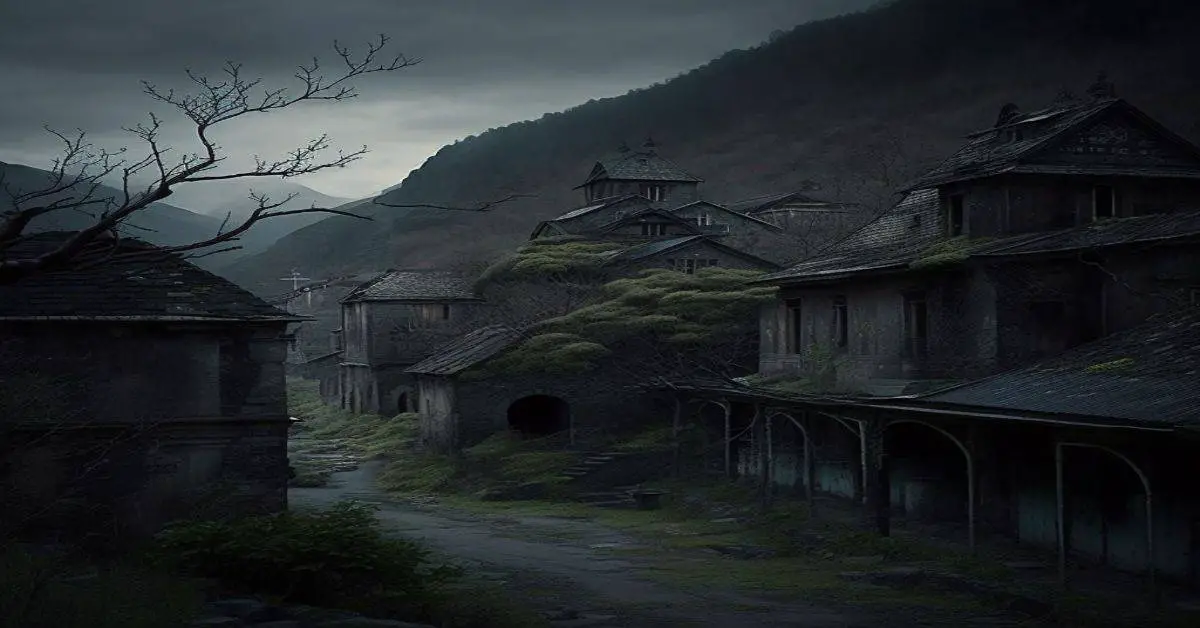Taos County, located in northern New Mexico, is a region steeped in history and culture. Home to several abandoned settlements, known as ghost towns, the county is a popular destination for tourists seeking to explore the remnants of the past. According to a report by the New Mexico Tourism Department, Taos County ranks among the top tourist destinations in the state, with over 1.5 million visitors annually.
Ghost towns are a fascinating and unique aspect of American history, serving as a reminder of the boom and bust cycles that shaped the nation. Taos County’s ghost towns provide a window into the past, offering insights into the lives of the people who once inhabited these settlements.
In this article, we will explore the history of Taos County, define what ghost towns are, and delve into the fascinating stories of the county’s abandoned settlements. Whether you are a history enthusiast or simply looking for a unique travel destination, Taos County’s ghost towns are a must-see.
Key Takeaways
- Taos County is a popular tourist destination in northern New Mexico with a rich history dating back to the 16th century.
- The county is home to several abandoned settlements known as ghost towns, which offer insights into the lives of people who once inhabited these settlements.
- Exploring Taos County’s ghost towns can offer a unique perspective on the economic, social, and cultural trends of the past, and visitors can connect with the past and discover the stories of those who once called these communities home.
- Local legends and folklore can add to the experience of exploring ghost towns, and lighting is crucial when exploring Taos County’s ghost towns, especially during the golden hour.
History of Taos County
With its rich history dating back to the 16th century, Taos County is home to several ghost towns that glimpse the area’s past and serve as popular attractions for visitors to explore.
The region has inhabited the Native American tribes of Taos Pueblo and Picuris Pueblo for thousands of years. Their presence in the area is evident in the petroglyphs, dwellings, and sacred sites that can be found throughout the county. The influence of the Native American culture can still be seen today in the art, customs, and traditions of the local communities.
The arrival of the Spanish in the 16th century brought about significant changes to the region. Spanish colonization led to Catholic missions, ranches, and settlements. The Spaniards introduced new crops, livestock, and building techniques that transformed the landscape.
The legacy of the Spanish in Taos County is visible in the architecture, art, and language of the region. Today, the county is a unique blend of Native American and Spanish influences, and the scattered ghost towns provide a fascinating window into the past.
What are Ghost Towns?
Abandoned settlements and remnants of past eras can be referred to as places commonly known as ghost towns. These settlements become abandoned due to various reasons such as natural disasters, economic decline, or a shift in the population. In Taos County, New Mexico, several ghost towns serve as a reminder of the past and attract tourists interested in exploring abandoned settlements.
- Ghost towns are not necessarily haunted, but they can be eerie due to their abandoned and decaying state.
- These towns often have a rich history that can be explored through the remaining structures and artifacts left behind.
- Ghost towns can remind of past economic, social, and cultural trends and changes.
- There are efforts to preserve ghost towns for their historical and cultural value, and to prevent them from being lost to time.
Exploring abandoned settlements can offer a unique perspective on history and provide insight into the lives of those who once inhabited these places. Ghost town preservation efforts are important in maintaining the cultural and historical value of these settlements for future generations to learn from and appreciate.
Through preservation and exploration, ghost towns can continue to serve as a valuable resource in understanding the past and preserving the history of Taos County.
Exploring Taos County Ghost Towns
Exploring the remnants of past eras in Northern New Mexico can offer a unique perspective on the economic, social, and cultural trends of the past. Taos County is home to several ghost towns abandoned for decades, but their ruins and structures still stand as a testament to the area’s history.
Visitors can explore these ghost towns and get a glimpse of life in the past, from the mining boom of the late 1800s to the agricultural communities of the early 1900s.
When exploring Taos County’s ghost towns, it’s important to remember some photography tips to capture the essence of these abandoned communities. Lighting is crucial, especially during the golden hour, as the sun’s rays cast a warm glow on the ruins and structures.
Additionally, local legends and folklore can add to the experience of exploring ghost towns. For example, the ghost town of Arroyo Hondo is said to be haunted by the spirits of those who died in a mining accident, adding an eerie element to the exploration.
Overall, exploring Taos County’s ghost towns offers a unique opportunity to connect with the past and discover the stories of those who once called these communities home.
Frequently Asked Questions
What caused the decline and abandonment of the ghost towns in Taos County?
The decline and abandonment of Taos County’s ghost towns may have been influenced by factors such as the decline of the mining industry and natural disasters. Further study through archaeological findings and preservation efforts can provide insight into their history.
Are there any ghost towns in Taos County that are still inhabited?
As ghost towns are by definition abandoned settlements, none of the ghost towns in Taos County are currently inhabited. While they offer a glimpse into the past, they are mainly tourist attractions and reminders of a bygone era.
What is the most well-preserved ghost town in Taos County?
The most well-preserved ghost town in Taos County, New Mexico is considered to be Elizabethtown. The town’s architecture is a testament to its historical significance, and exploring its remains provides insight into the area’s mining past.
Are there any unique features or landmarks in Taos County ghost towns that make them stand out from others?
Taos County’s ghost towns have unique landmarks distinguishing them from others, such as the St. James Church in Arroyo Hondo and the San Francisco de Asis Church in Ranchos de Taos. These landmarks have historical significance and attract tourists.
Are there any ghost town-themed events or festivals held in Taos County throughout the year?
Ghost town related festivals and events are held in Taos County annually, including the annual Ghost Ranch Fall Festival and the Taos Pueblo Pow Wow. These events attract tourists and showcase the unique history and culture of the area’s ghost towns.


